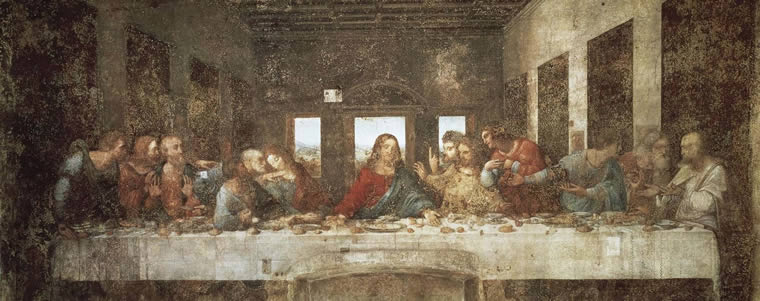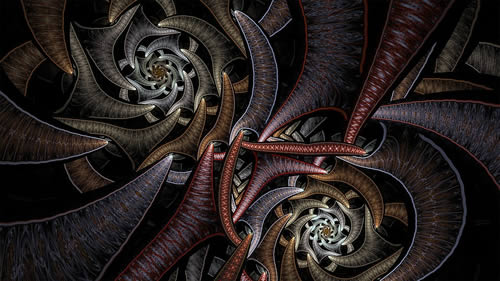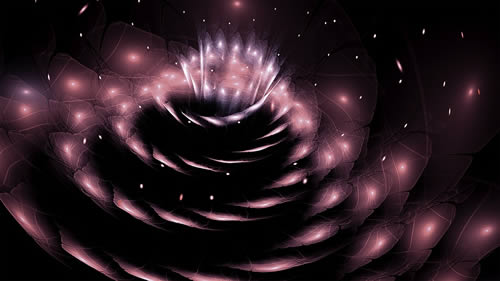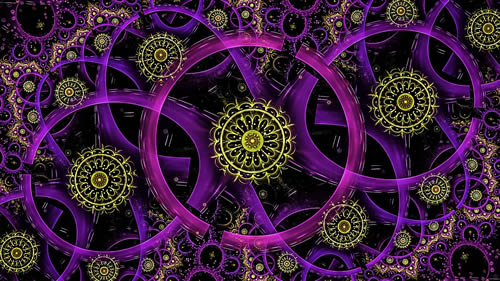
The Last Supper by Leonardo DaVinci, painted 1495-1498.
Monday’s New Moon is in Gemini. One of its distinctive features is its location in the United States chart on the relationship angle. The suggestion is that there is some news, development or at least the need for attention focused on this aspect of our lives.
Relationships form the primary environment in which we live. While it’s true that we live amidst buildings, cars, airplanes, toasters and a vast computer network, our actual environs are what we experience of humanity.

Image by Barbara A Lane.
Another distinction for this New Moon is that it is conjunct the asteroid Magdalena. Officially (318) Magdalena, it was discovered in 1891 in Nice on the southern coast of France.
It is interesting that in the modern mythology of Mary Magdalene, she is reputed to have migrated to France. And along that coast is the town of Saintes-Maries-de-la-Mer, named for the two most notable Marys in the life of Jesus — his mother and his wife.
I’ll come back to that theme in a moment.
First, some of the astronomical features. The New Moon takes place opposite a point called the Great Attractor, which is a vortex focusing a supercluster of 100,000 galaxies called Laniakea (or “Great Heaven”). Mercury, the planetary ruler of the New Moon’s sign, is in late Gemini, opposite the core of the Milky Way, our local galaxy.
Moon, Sun, Magdalena and Mercury stand face to face with entities far greater than themselves, at least in scale; entities rarely considered by most people and not fully understood even by astronomers. This is a message to keep some perspective. Humans so often get lost in and distracted by what is right in front of us, or more accurately, lost in the maze of how we filter our perceptions.
Square Nessus and Neptune
The New Moon is square the centaur Nessus, and the planet Neptune. Of the two, Nessus is the tighter aspect, though Neptune exerts a wide orb of influence that’s fully in effect. Nessus is asking how we handle issues such as abuse legacy, and the notion of what a “victim” is.

Image by Barbara A Lane.
This is a complex issue that gets lost in popular trends and also a psychological phenomenon of projection. As Anaïs Nin said, “We don’t see things as they are. We see them as we are.” This may not be an absolute, though it’s essential to account for perception and projection when we make a claim about how the world is.
Neptune carries a warning about distortions of perception. Nessus carries a warning about victimization and victimhood.
The real work of Nessus begins when someone is willing to take responsibility for their state of affairs. That does not mean the blame for what was done to them, but rather how they respond and what they do about it. We know from a model called the Karpman Drama Triangle that those who perceive themselves as victims are, in the next round, those most likely to take up the role of perpetrator. (Enablers and rescuers become the next victims.)
The work of Neptune begins when one challenges one’s own perceptions. We live in a time when people love the word ‘story’. The thing to remember about story is that it’s a construction. Many of these stories are based on ungrounded expectations. While today we look to story as a solution, in well-established therapeutic traditions it’s been regarded as a thing to treat with caution and awareness rather than automatic acceptance.
Caution is necessary because the human tendency to get caught in our own narratives is so strong. We tend to make up stories about ourselves, and then believe them, and tell them over and over, and convince other people that they’re true.
A Word About Gemini
Gemini illustrates the human condition known as dualism. This takes many forms, though the most elementary is the separation of me from you. That can manifest as seeking completion from others, identifying with them, or counting them as one’s adversary or enemy. The “other” phenomenon also makes projection possible: what I feel in myself, I blame the other for.

Image by Barbara A Lane.
This can also reflect what seems to be a split between aspects of the psyche. This is described many ways: ego versus spirit, various voices inside the mind, inner child and inner adult, true self versus false self, inner male versus inner female, loving self versus hateful self, and in modern thought, left hemisphere versus right.
I would remind you the idea of Marshall and Eric McLuhan: “All war is war between the hemispheres of the brain.” They really meant all wars. This is partially fed by the tendency of people to resort to violence and conflict when they are trying to figure out who they are.
Where there is a split in the mind, people will tend to project it outward, onto others. That suggests (as every careful observer of human psychology has noticed at least once) that outer conflict grows from inner conflict. When we are in the victim territory of Nessus and the story/narrative/illusion territory of Neptune, we need to be cautious about this. There are personal narratives we must monitor carefully. Yes, it’s possible to trot them out in the current environment and get attention, pity, “support,” likes and shares, but that does not make them true, or spiritually productive.
Magdalena and the Role of Women
What we know about Magdalena we know from scripture, from lore and from fiction. We also know something from Leonardo, who painted Magdalena into The Last Supper, sitting at the right hand of Jesus. The Bible provides religious sanction; Leonardo’s depiction gives her street cred, because we regard him as an erudite genius and a fair person.
In scripture, Mary was said to be a woman of means, who is thought of as financially helping Jesus with his ministry. She was at the crucifixion, she was there when the crypt was opened, and she was the first to attest to Jesus as one who had resurrected.

Image by Barbara A Lane.
She is a witness to the faith. It is incredible, then, to consider the ways in which the Universal Church has treated women as non-people. None of the Abrahamic religious are particularly kind to women, though the Catholics went off the charts, particularly in their unkindness to women and sexuality, which are closely related.
Where sex is vilified, women are vilified, and this is very much in the tradition of Christianity, though (as typical) has nothing at all to do with the life of Jesus and how he treated women.
Among the delineations of (318) Magdalena that we’ve seen are themes such as commitment to a group or collective cause. This point can represent an inner change in direction after intuitively noticing small signs or miracles in everyday life.
We can think of Magdalena as a shaman, “one who takes on the responsibility for the soul of the tribe.” This is a very high (meaning difficult and challenging) calling to service, leaving no room for ethical or moral ambivalence.
We might do better to consider women as people. We are all just folks. There is misunderstanding in our current “story” about the role men play in society. A perception is being woven of all men as patriarchs who collaborate in whatever the patriarchal narrative of the day is all about. This is just more polarization.
Confronting Our Sense of Powerlessness
Most men do not feel powerful, or even meekly influential. Most men are doing our best to get by, to be useful, and to take care of the people in our lives as best we can — many of whom are women. The perception of all men as influential patriarchs throwing around their weight and mongering violence is a raw stereotype.
When you hear the term “patriarchy,” the first question to ask is, “How do you feel about your father?” (That’s the real patriarch.) While we are evaluating how men treat women, we might also take a close look at how women treat other women — and how women treat men.
All individuals, in the process of attaining maturity, growth and the cultivation of personhood — which is almost always a lifelong struggle — must confront our sense of powerlessness, our lack of a voice, our failure to “be heard,” our seeming lack of any influence over the flow of events. How real is any of this? We must go beyond the stories we tell ourselves and one another.

Image by Barbara A Lane.
Women on our planet face special challenges and easy exploitation due to the biological role of bearing and nursing children. This is why any effort to remove women from power of choice over their reproduction or any physical expression is about not just stripping personhood, but in truth, turning women into reproductive slaves. And this is very much a question that is relevant in our present moment.
Consider that situation, where members of a society squander or hand over their rights and privileges in what seems like a voluntary act. Men and women are involved because all of society is involved. Wilhelm Reich described a much more sinister problem, which he attributed to the “little man” — by which he meant everyone. Reducing one’s own worth means doing the same to the world. This, he called the “emotional plague.” For those mystified by what is happening in our society right now, consider this:
“It is the fate of great achievements, born from a way of life that sets truth before security, to be gobbled up by you and excreted in the form of shit. For centuries, great, brave, lonely men have been telling you what to do. Time and again you have corrupted, diminished and demolished their teachings; time and again you have been captivated by their weakest points, taken not the great truth, but some trifling error as your guiding principle. This, little man, is what you have done with Christianity, with the doctrine of sovereign people, with socialism, with everything you touch. Why, you ask, do you do this? I don’t believe you really want an answer.”
Today, we could add that what has been done to Jesus has also been done to Mary Magdalene. There is a rather direct answer to this frightening thought in A Course in Miracles. I leave you with that.
“There is a deep responsibility you owe yourself, and one you must learn to remember all the time. The lesson may seem hard at first, but you will learn to love it when you realize that it is true and is but a tribute to your power. You who have sought and found littleness, remember this: Every decision you make stems from what you think you are, and represents the value that you put upon yourself. Believe the little can content you, and by limiting yourself you will not be satisfied. For your function is not little, and it is only by finding your function and fulfilling it that you can escape from littleness.”


Dear Eric,
Thank you again for a wonderful and insightful piece of work.
Decades ago when I was in my early 20’s, my parent’s took me to a research foundation for help with the question, “How do we guide our daughter?” After days of testing feeling like a lab rat, we were given an answer. They could be no help at all.
Both hemispheres of my brain were dynamic and active. It was the reason I showed talent and ability in so many areas. It also meant I lived in a constant war with myself, within myself. No matter what hemisphere I chose to focus upon, the other lived in denial. It was a lose-lose situation.
We were told that since only 1/2 of 1% of the population were born this way, no group studies had ever been done. We were also told that due to the inner state of continuous conflict, people like me didn’t live very long. Not usually past 30. We implode.
The only guidance they could give, was the possibility that I could use this brain power to figure it out myself, for myself. That’s when and why I turned inward.
I’ve got one thought to share concerning the treatment of women and the “battle of the sexes”.
Since the mirror is reflecting a lack of Respect and Worth, the problem is starting with women and what we think and believe about ourselves. It’s not the men’s or the ‘patriarchy’s fault. Cause and effect have been reversed. And it might help to get us someplace if we put the horse in front of the cart instead of the other way around.
Agree Sue. The only battle exists within. Oue’sYang with oulne’s Yin. Mastery is giving both turns lol (first this one then the other one).
Our Yang… Our Yin *correction*
How does a culture turn women into ‘reproductive slaves? Here is one example, from out ‘present moment’.
In Alabama — where lawmakers banned abortion for rape victims — rapists’ parental rights are protected.
‘When a young woman came to the Family Services of North Alabama office last year for help with trauma, saying she had been raped by her step-uncle when she was 15, rape crisis advocate Portia Shepherd heard something that “killed me, shocked me.”
The step-uncle, who was getting out of jail after a drug conviction, wanted to be a part of their child’s life. And in Alabama, the alleged rapist could get custody.’
https://www.washingtonpost.com/national/in-alabama–where-lawmakers-banned-abortion-for-rape-victims–rapists-parental-rights-are-protected/2019/06/09/6d2aa5de-831b-11e9-933d-7501070ee669_story.html?utm_term=.e3d959554be6